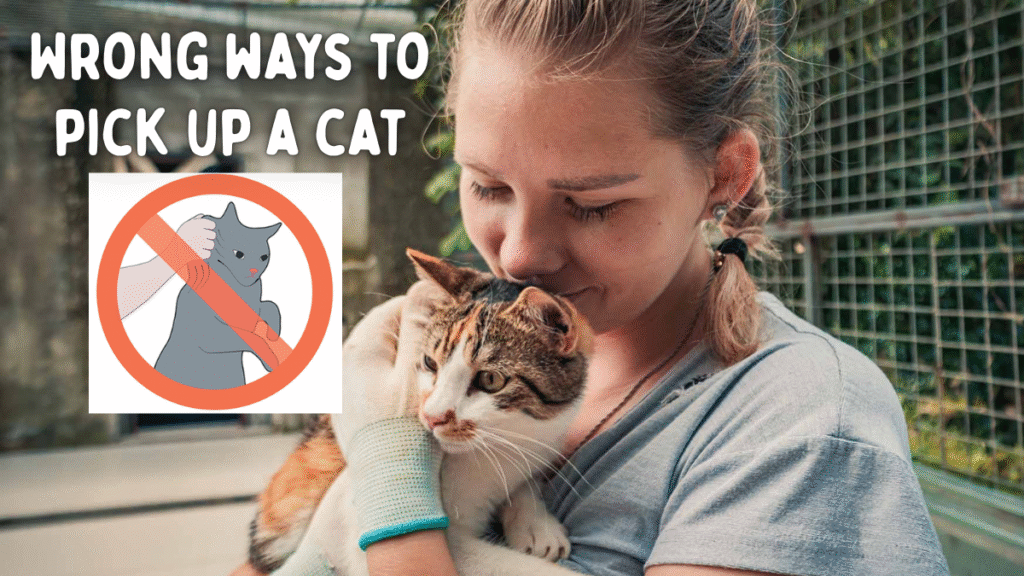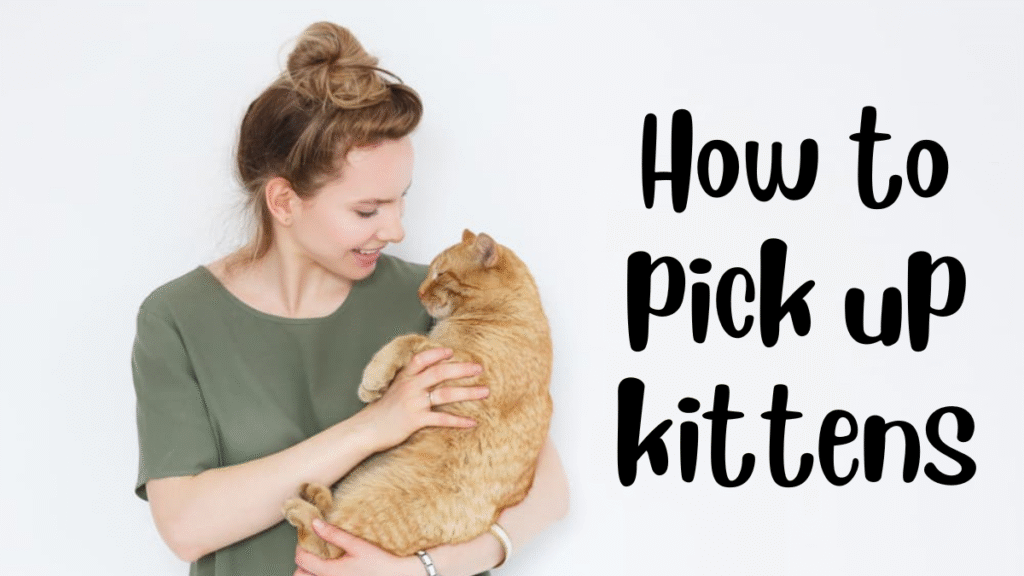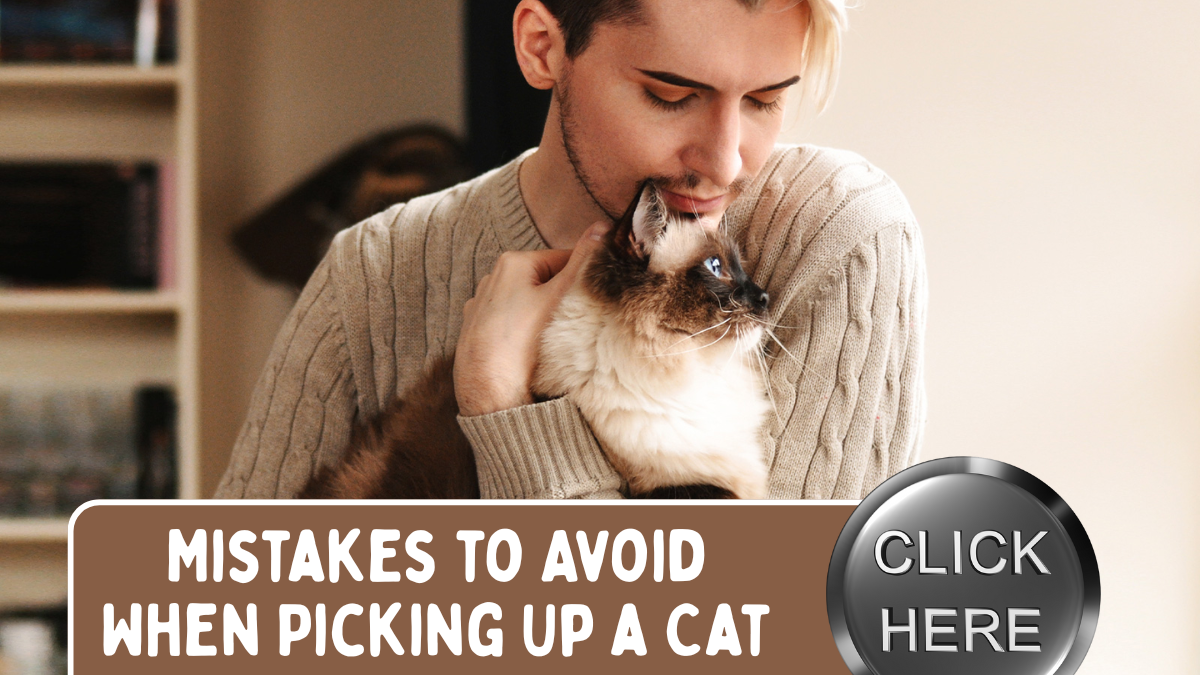Right and wrong ways of adopting a cat—what not to do and how to hold them correctly
Cats are extremely sensitive and fragile creatures. Their safety, consolation, and courting with you can all be extensively impacted by way of how they’re dealt with. Cat owners frequently treat their pets inadvertently in approaches that cause them to be uncomfortable or fearful or maybe cause behavioral modifications.
In order to strengthen your hyperlinked and preserved I love you, cat secure and glad, we will examine in this article how not to pick up a cat, what common mistakes to keep away from, and how to hold them well.
Why is picking up a cat the wrong way harmful?
If a cat is picked up in the incorrect manner, it is able to go through bodily accidents inclusive of spinal strain or joint pain. There’s also the emotional impact—the cat can also enjoy being scared or indignant, which could bring about it regularly averting you. That’s why it is important to recognize the proper manner to pick up a cat and keep away from mistakes.
Common mistakes: Wrong ways to pick up a cat

Picking up a cat by the scruff
Most people count on that picking up a cat via the scruff is wonderful due to the fact this is how the mom cat picks up her kittens. But this is only suitable for small kittens. It is not suitable for mature cats in the least.
Why you shouldn’t pick up a cat:
- Discomfort and pain: Older cats are heavy, and the scruff cannot hold their full body.
- Injury risk: Neck and spine may be strained.
- Fear and stress: The cat will feel insecure and scared when picked up in this manner.
Hanging by the scruff of the neck
Even if one has to use this method for some special purpose, for example, at a medical examination, it is completely incorrect to hang a cat by the scruff of the neck alone. In that case, its body and hind legs must always be supported.
Lifting by the front legs only or holding it under the arms
Most individuals attempt to pick up cats by catching them under the arms as they do with humans, but it is not suitable for cats.
What is caused by this?
- Joint stretching: Cats’ bodies are not designed to support weight in this manner.
- Injury risk: It might lead to muscle strain or damage.
- Stress: The cat becomes nervous and might attempt to strike or bite.
Sudden grabbing
Cats are extremely touchy and alert. If you attempt to catch them off shield, they’ll panic and run, chunk, or scratch in worry.
Always approach slowly and lightly, and lead them to aware which you are gift first.
Ignoring a cat’s body language
Cats usually give hints through their movements that they do not wish to be held. If you do not heed their hints, they will become angry or avoid you in the future.
These signs may be
- Ears pinned back
- Tail twitching
- Growling or grunting angrily
- Attempting to run away
In this sort of state of affairs, it is satisfactory to leave them alone.
How to pick up a cat the right way
Now that you know what not to do, let’s speak about the ideal way to make your cat feel safe and comfortable.
Step 1: Approach Calmly
- Speak softly so the cat is aware of your presence.
- Don’t make any sudden movements that might scare them.
Step 2: Provide Full Body Support
- Place one hand under their chest, behind their front legs.
- Place the other hand to support their hind legs and bottom.
Step 3: Lift Slowly and Carefully
- Pick up the cat slowly and bring it close to your body.
- No need to grip too tightly, just enough so that they feel secure.
Step 4: Maintain Stability
- Hold the cat against your chest so that they are level.
- Keep their weight evenly distributed so that they don’t feel uneasy.
How to pick up kittens

Kittens are extraordinarily sensitive, so they need to be dealt with with even more care.
- Use both fingers: It is important to aid the complete body.
- Grip very lightly: Just a bit too hard a grip will hurt them.
- Train children: If children are present in the house, explain to them how to hold the cat gently and affectionately.
When not to lift a cat
There are certain situations when it is best to leave the cat alone:
- When it is stressed or scared: If your cat is scared of something, a noise, or a new place, do not attempt to hold it.
- After surgery or injury: During that time, only hold the cat after consulting a doctor.
- When it is eating or sleeping: Don’t intrude on its rest and privacy.
How to Build Your Cat’s Trust
Having your cat the right way is only half the equation of creating a good rapport between you and your cat. Also:
- Spend quality time: Play with them, stroke them, and provide them with a warm caress.
- Provide positive rewards: Reward them with a treat or a friendly pat when they get into your lap voluntarily.
- Respect boundaries: Pick them up only when they wish to be with you.
Conclusion: What not to do and how to pick up a cat correctly
Picking up your cat the wrong way, like with the aid of the scruff of the neck or via the front legs on my own, is dangerous for them. By doing it in the right manner, you no longer have to hold them secure; however, you may in reality shape an awesome courting with them.
Always treat your cat with love, endurance, and knowledge—in order that they not only sense stability but also believe you utterly.
FAQs
Is it okay to pick up a cat by the scruff?
No, scruffing adult cats can cause pain, injury, and stress; it’s only appropriate in rare medical situations.
Why shouldn’t you lift a cat by its front legs?
Lifting by front legs strains joints and spine, causing discomfort, instability, and potential injury or dislocation in cats.
What signs show a cat doesn’t want to be picked up?
Flattened ears, twitching tail, growling, hissing, and attempts to escape indicate your cat feels uncomfortable or unsafe.



